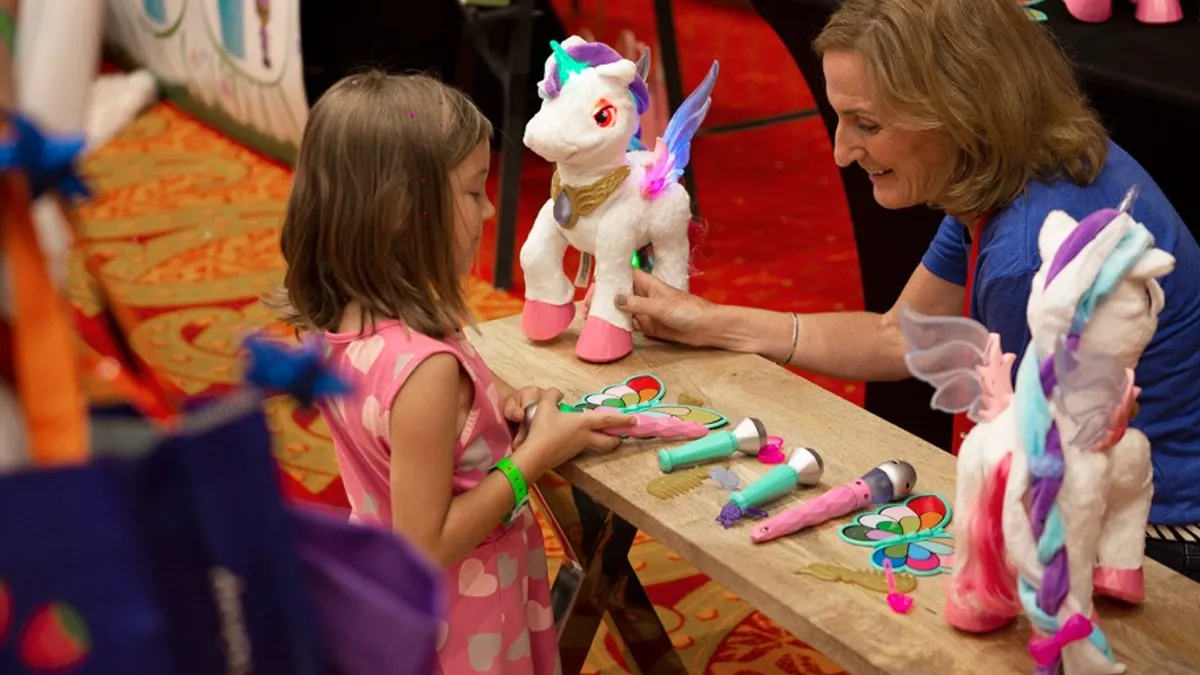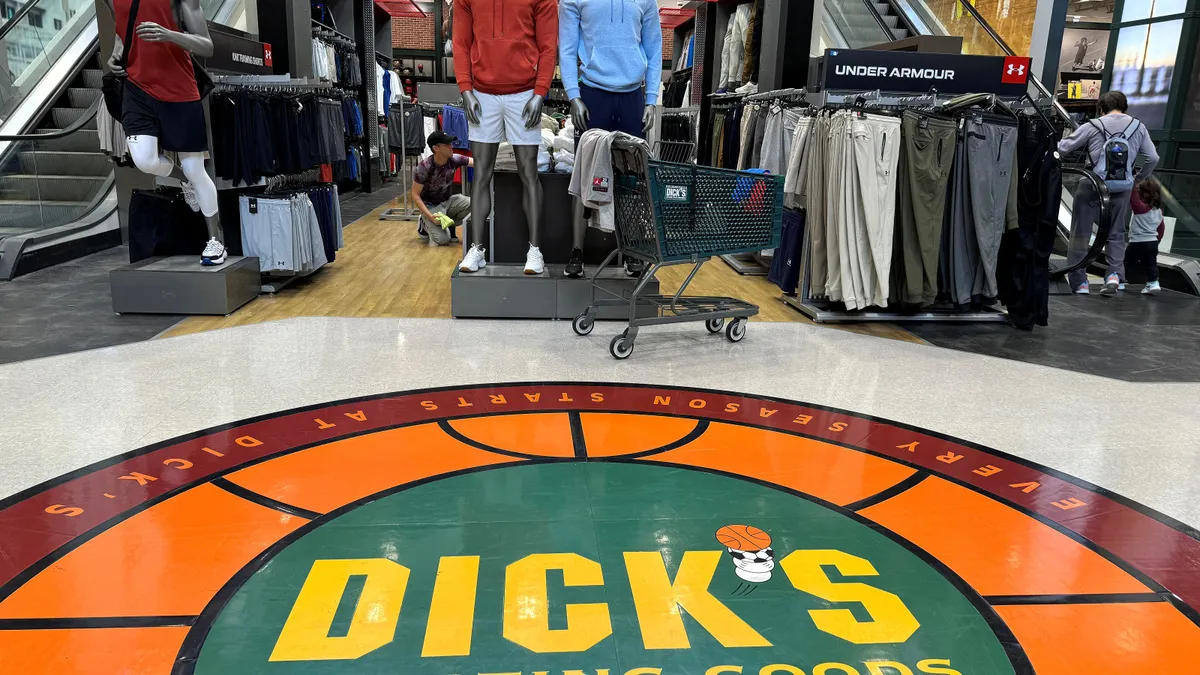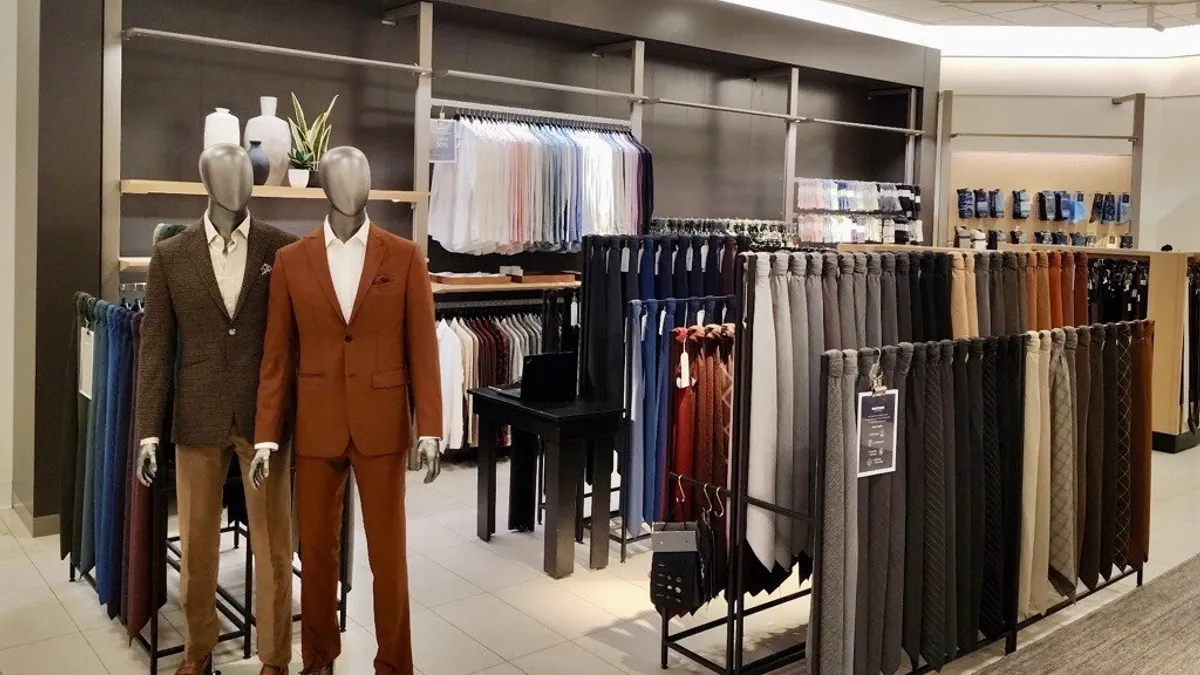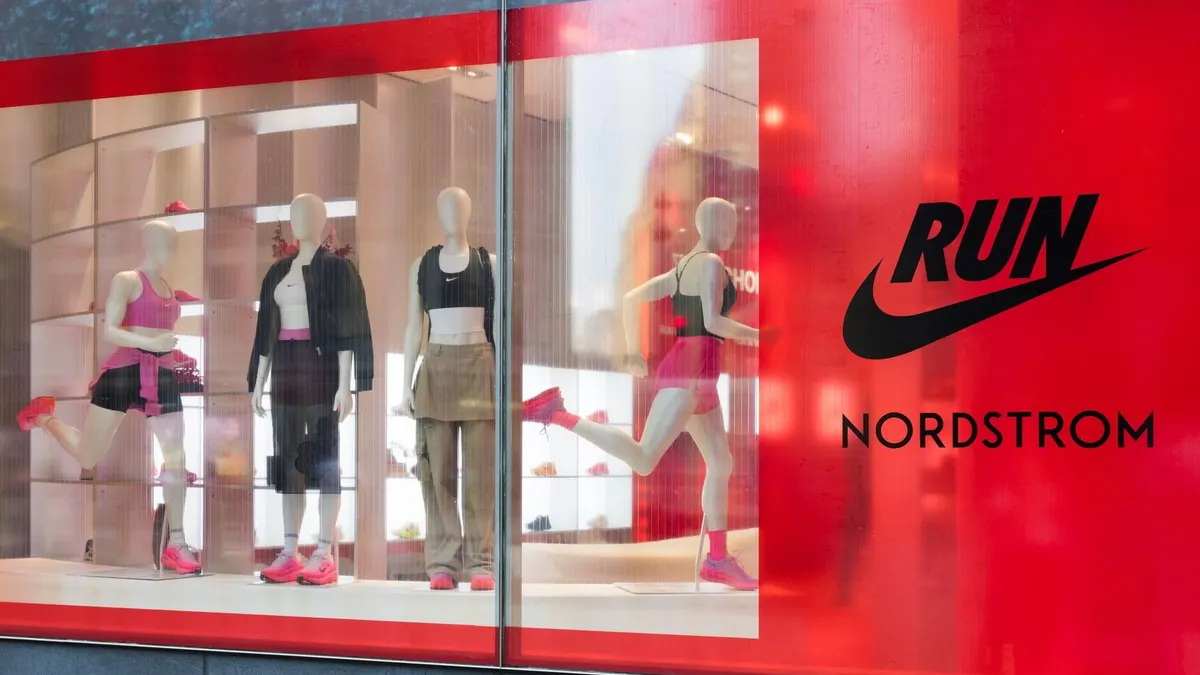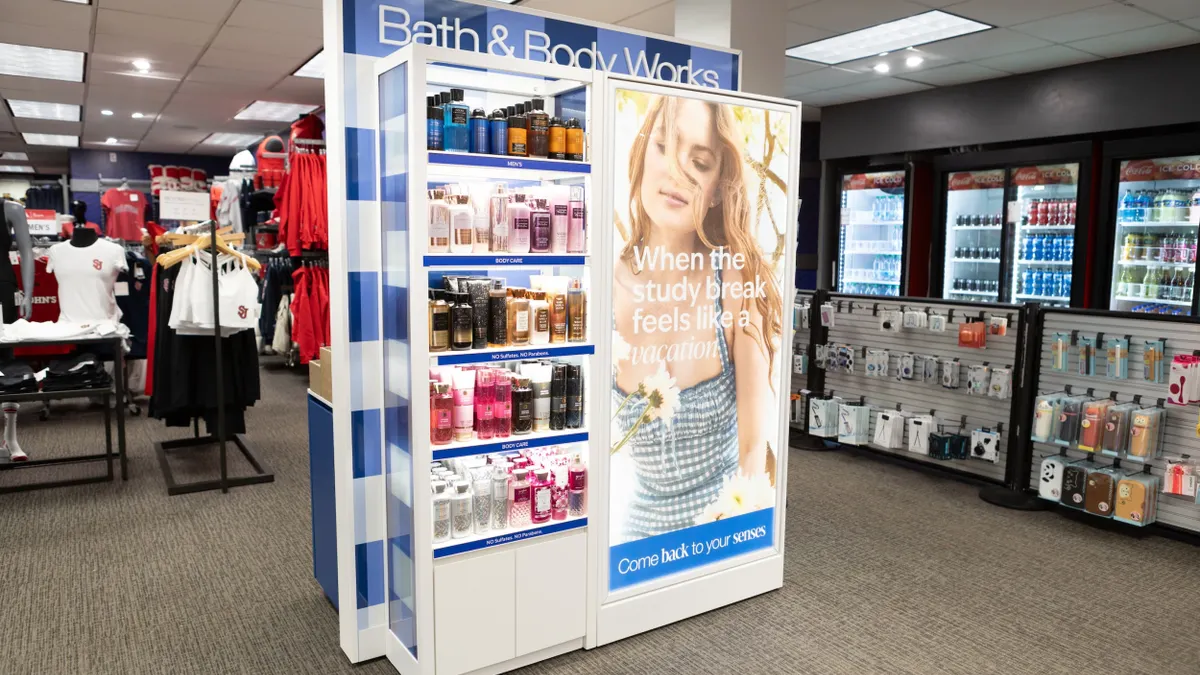What happens to a category when its largest retail specialist disappears? Toys offers perhaps the clearest answer to that question.
This year's holiday sales season marks the second without the big box version of Toys R Us. It could be even more important than the one before to secure market share and win over displaced Toys R Us shoppers looking for a new go-to shop for toys.
"We think right now it's fluid, but that it will get less fluid over time and probably significantly less fluid after this holiday," Jaysen Gillespie, head of analytics and data science for Criteo, said in an interview, referring to the retail market for toys.
He notes that shoppers were taken off guard by Toys R Us' disappearance from the landscape in the summer of 2018. "Now this [holiday season] they've had the whole year to start to draw other preferences for where they get their toys," Gillespie said. "And those preferences can be solidified by giving that customer an amazing Q4 experience."
The fourth quarter, by far the most critical for the category, is likely to be dominated by the country's largest retail players. Expect a heated battle among them, while other major players look to fill narrower roles.
However it shakes out, toy sales this year could set the pace for future holidays as retailers compete to step fully into the void left by Toys R Us.
The ghost of holidays past
Going into the holiday season of two years ago, Toys R Us had around 650 stores in the U.S. (excluding its stand-alone Babies R Us stores) and made nearly $1.4 billion in domestic toy sales.
The retailer was also in bankruptcy and on the ropes, outflanked on price and technology by the other leading toy retailers: namely Walmart, Target and Amazon. Woefully out-of-date IT technology also led to numerous operational problems, including during the Black Friday week.
Put simply, the most important holiday season for Toys R Us was a disaster. Its bankruptcy financiers pulled the plug and sent the company into liquidation the next year.
D.A. Davidson & Co. senior analyst Linda Bolton Weiser said that sales for the toy industry are starting to "normalize" after the disappearance of Toys R Us and are showing they can grow again. According to NPD Group, toy industry sales in the U.S. are set to decline modestly in 2019 and then pick up again in 2020 with growth to continue through the end of 2021.
"It was growing in double digits up until the Toys R Us bankruptcy. And this year, in 2019, they were flat."

Linda Bolton Weiser
Senior Analyst at D.A. Davidson & Co.
While shoppers have moved on from the liquidation of Toys R Us, the full industry hasn't quite yet. "Some of them are going under," Weiser said. "I spoke to a private toy company recently. I won't name names, but it was growing in double digits up until the Toys R Us bankruptcy. And this year, in 2019, they were flat. It's very hard for them because they're not going to be carried by the bigger guys."
Jay Foreman, CEO of toymaker Basic Fun, says his company still hasn't made up all of its sales lost from Toys R Us but expects to next year. Still, it's a tougher world without the toy retailer.
"Life without TRU is like a tale of two toy industries," Foreman said by email. "If [you] are large or strong enough, you are surviving and moving on, leaning on Amazon to fill the gaps. If you are small and your lines are not strong enough, you are suffering."
He added: "TRU was still the place to launch a product and get it on shelf. Target and Wal-Mart are not that easy to break into and Amazon has too many items to really launch product so it's tough for the smaller guy to break in."
The big three
Since Toys R Us collapsed, a wide range of retail has eyed the toy market in its absence. That includes the big three that stole Toys R Us' market share for years, culminating in that calamitous 2017 Q4.
"The biggest players — Target, Walmart and Amazon — are the ones that took the 15% market share that was vacated," Weiser said.
Profitero, a company that provides e-commerce performance analytics, found Walmart was the top destination for former Toys R Us shoppers. Of survey respondents who had previously bought from Toys R Us, 43% told Profitero in May they favored the retail giant, followed by Amazon (33% of respondents), Target (17%), specialty toy stores (6%) and other retailers (1%), according to an emailed report.
Those are the same players that dominated when Criteo found in November 2018 that Amazon was the main replacement source for toy and baby products among Toys R Us shoppers, followed closely by Walmart and Target.
The big toy sellers have only gotten bigger since then. Last year, Walmart, Target and Amazon all increased their toy assortment and added marketing bells and whistles to push the category. (Walmart, for example, launched an interactive digital "playground"; Amazon dropped a paper catalog.)
"I don't think it's settled yet in terms of who are the go-forward winners," said Bill Lewis, a director with AlixPartners' retail practice. "Of course, the bigger players — Amazon Target, Walmart — have the scale to compete for the larger big-box toy dollars."
This year, each of those leading players is flexing its muscles in the market.
Walmart
With Toys R Us gone, Walmart has taken to calling itself "America's Best Toy Shop." According to IBISWorld, it holds the largest market share (23.1%) in the retail toy market (which includes video games), a nose ahead of Amazon (at 19.6%), according to an emailed report. Executives with the company said in August that Walmart had gained share in toys in the second quarter.
As it ramps up for the holidays, the retailer has increased its exclusive toy products by 25%, added 40 new toys from kid-influencer brands, released a "Top Rated by Kids" hot toy list, renewed its made-up "National Play Day" in-store events and relaunched its interactive toy lab. And all that is on top of expanding its toy assortment by 30% in stores last year and 40% online.
In mid-October, Walmart announced it was rolling back prices on more than 200 toys in stores and online, making for a total of more than 400 discounted items in the category ahead of the holiday season. The company said in a blog post at the time that it was "committed to having the best prices on toys."
Keith Anderson, Profitero senior vice president of strategy and insights, said in an interview that his firm's data shows Amazon leading on price in toys, but Walmart's prices are within 1.7% of its rival's. "Which is close enough that having the gift in hand now where you can see and hold it is probably worth it," Anderson added.
Weiser notes that Walmart is "taking a slightly more sophisticated view" on price this year. Her team found that the company priced many items on its hot toy list this year at relatively high price points along with lower-priced commodity toys.
"I think Walmart comes comes out ahead, mostly due to price."

Keith Anderson
Senior Vice President of Strategy and Insights at Profitero
Weiser also notes that Walmart's toy list — a feature of the toy category that is part marketing tool, part vendor relations tool, part trend projections — includes the highest percentage of toys (42%) in six years that are made by those beyond the major players like Hasbro and Mattel.
"It shows that Walmart is trying to get either its own stuff more exclusive or it's trying to get things that are more minor brands that are not the Mattel and Hasbro normal things," she said.
Criteo found previously that Walmart and Target were the top choice among former Toys R Us shoppers that preferred brick-and-mortar stores. Gillespie said that in-store shoppers are more often of lower or middle income and prefer to pick up toys in person, where Walmart and Target can offer a one-stop shop for groceries along with the full range of other categories.
Walmart's stores create opportunities for discovery as well. "With my daughter, if we're walking through Walmart or Target, and she sees stuff that she likes, then it ends up on the wish list," Anderson said. "I think there's just a natural linkage between where the desire originates in many cases and where you ultimately buy it. I think Walmart comes comes out ahead, mostly due to price."
Amazon
As it is with so many other categories, so it is with toys: Online, Amazon dominates.
Prior to the wind down of Toys R Us, Amazon controlled nearly 75% of all Hasbro and Mattel transactions online, according to Jumpshot. (Walmart's share was just 2.9% at the time.) Amazon also ruthlessly ate Toys R Us' lunch, snatching the ultimate sales from 80% of the users who viewed toy and video game products on Toys R Us' site when it was active. (That is likely due to Toys R Us' prices, which were consistently higher than mass merchant rivals online.)
Earlier this year, eMarketer projected Amazon's sales in toys would grow about 23% this year. Perhaps even more important, 77% of shoppers in the U.S. start online toy searches at Amazon, Profitero found this year. Already a majority of customers prefer to shop for toys online.
And while Walmart and Target's stores bring in traffic and, with it, potential impulse purchases, Profitero's Anderson says that, "I just don't think of [stores] as sort of a five or 10-year advantage over somebody like Amazon."
As of Oct. 22, Amazon listed more than 630 toys as exclusive to its site, though the exact number has fluctuated.
Target
Like Walmart and Amazon, Target is accelerating its expansion into the category.
This year Target says it has more than 2,500 new and exclusive toys. That's almost twice the number from last year, and the retailer also said it has deepened its inventory of new toys and "nostalgic favorites." It is also reallocating space in 500 stores to make room for more toys, as well as promoting a paper toy catalog and "way more" in-store events.
Target has made two splashy moves in toys this year, though time will bear out how meaningful they are in terms of boosting sales. First, the company partnered with Disney to create 25 Disney toy shops within Target stores, with an additional 40 scheduled to open by October next year. The assortment at the stores-within-stores includes 100 products that were previously only available at Disney retail stores.
Target has also partnered with the revived Toys R Us to power the brand's relaunched website. Whereas Toys R Us used to unintentionally lose 80% of its online sales to Amazon, now it is strategically sending all product sales to Target's website via a "buy" button. Target, then, is managing the actual sales and fulfillment of orders by anyone coming to Toys R Us' site — which houses reviews and interactive content — to actually buy something.
Is there room for anybody else?
Toys R Us' tie-up with Target comes on top of its widely publicized re-entry into brick-and-mortar, with two stores opening this year.
The stores — opened through a joint venture between retail-as-a-service startup b8ta and the holding company that owns Toys R Us' intellectual property — are also low-risk. They are much smaller than the previous incarnation's box stores, and Toys R Us doesn't purchase inventory and sell it, but rather sells space to toymakers.
"It's a clever way for them at very low cost to essentially be this affiliate that feeds the traffic into a very trusted player, Target, while at the same time placing a modest bet, but a very interesting one, getting a lot of publicity through their retail stores," Gillespie says of the new Toys R Us' moves this year. "If they wait another year, it's just going to get harder and harder because the brand nostalgia will fade over time. And the other entrenched players will build a little higher wall around those consumers."
Anderson notes, though, that the "toysrus.com" website previously wasn't even ranking on the first page of organic search results through Google for "Toys R Us," though it was when he searched again in October. "That says to me ... boy, nobody knows about this, nobody's looking for this," he said. "And so having it get to any kind of material volume that would impact the industry over this quarter, it is tough to imagine."
The reincarnated Toys R Us returns to a category now almost entirely dominated by three of the biggest names in retail. That begs the question: Can anybody compete with Walmart, Amazon and Target in toys?
"If your strategy isn't about price and convenience, you might as well not even bother."

Bill Lewis
Director at AlixPartners
"There's niche competitors that are trying to eke out differentiated experiences," Lewis said. "And so I still think you'll see this year people approaching the toy market with the strategy to gain share, because it's fluid."
In the category, Lewis says that top priorities for customers are price and convenience, which at scale "defaults to the big players." But there is room for others to maneuver, he adds, if they have some offering on price and convenience, potentially by offering some toys as loss leaders or adding buy online, pick up in-store for toys.
Newcomers to the market this year could potentially nudge into the market with exclusive toys or character tie-ins. "But if your strategy isn't about price and convenience, you might as well not even bother," he said.
The opportunity that is out there amounts largely to "nibbling around the edges," in Gillespie's view. "It's largely a product differentiation opportunity," he said. "Maybe you're into toys that are out of wood, and natural and sustainable" or other niche products.
Last year, it seemed like half of retail was trying to get a piece of the toy market. Kohl's, Barnes & Noble, J.C. Penney, Five Below, Party City and grocery stores all expanded their toy presence in way or another. The market, even with one of the largest players gone, is as tough, and consolidated, as ever.
"I'm sure these other guys are trying to differentiate themselves," Weiser said. "They can't compete. Walmart can use [toys] as loss leaders, they can price below their costs. So if you're a little specialty toy store, or even if you're Barnes & Noble, you can't compete with that."



